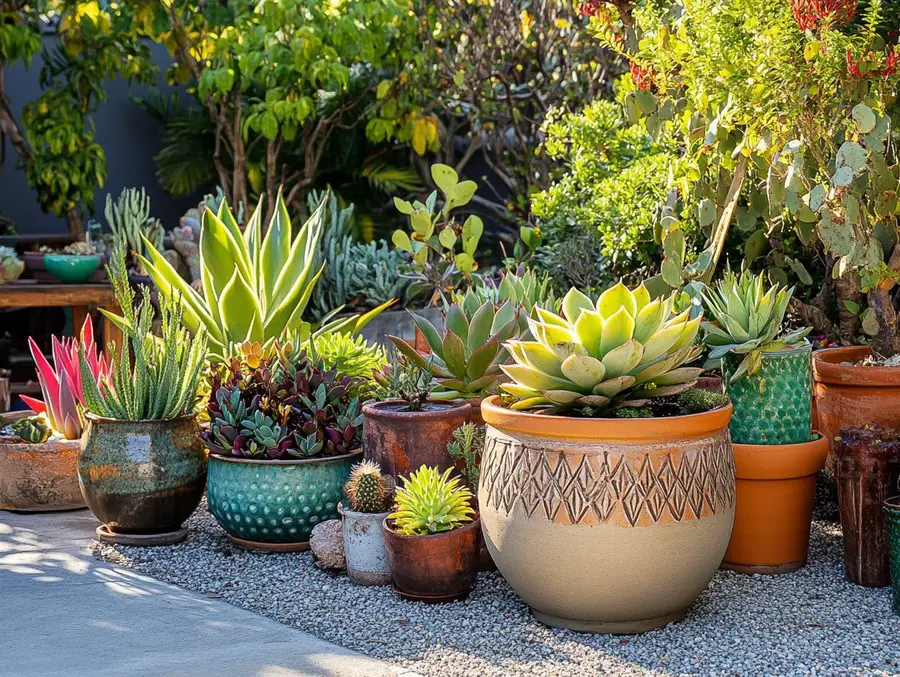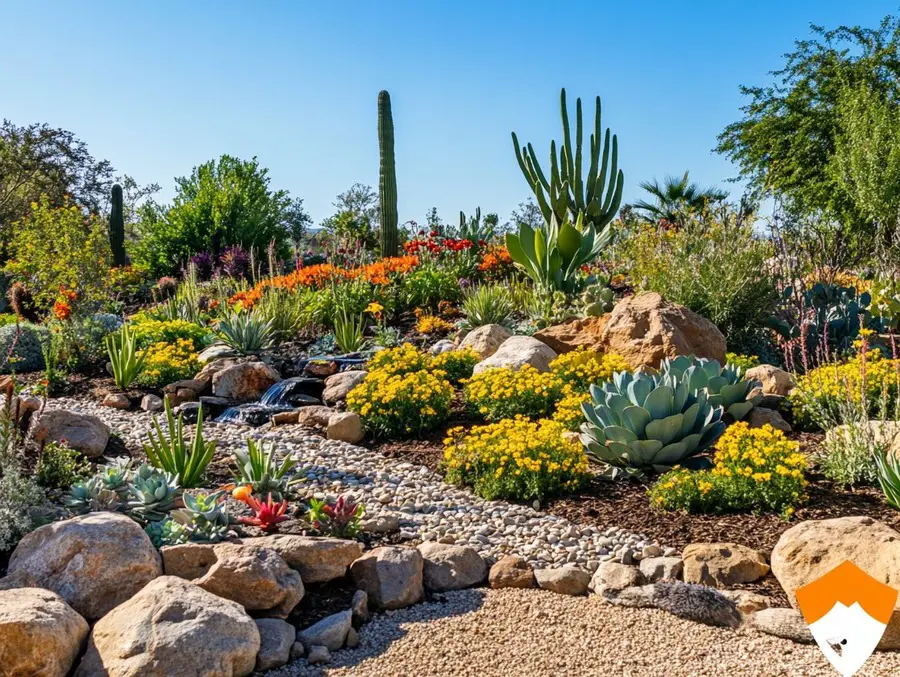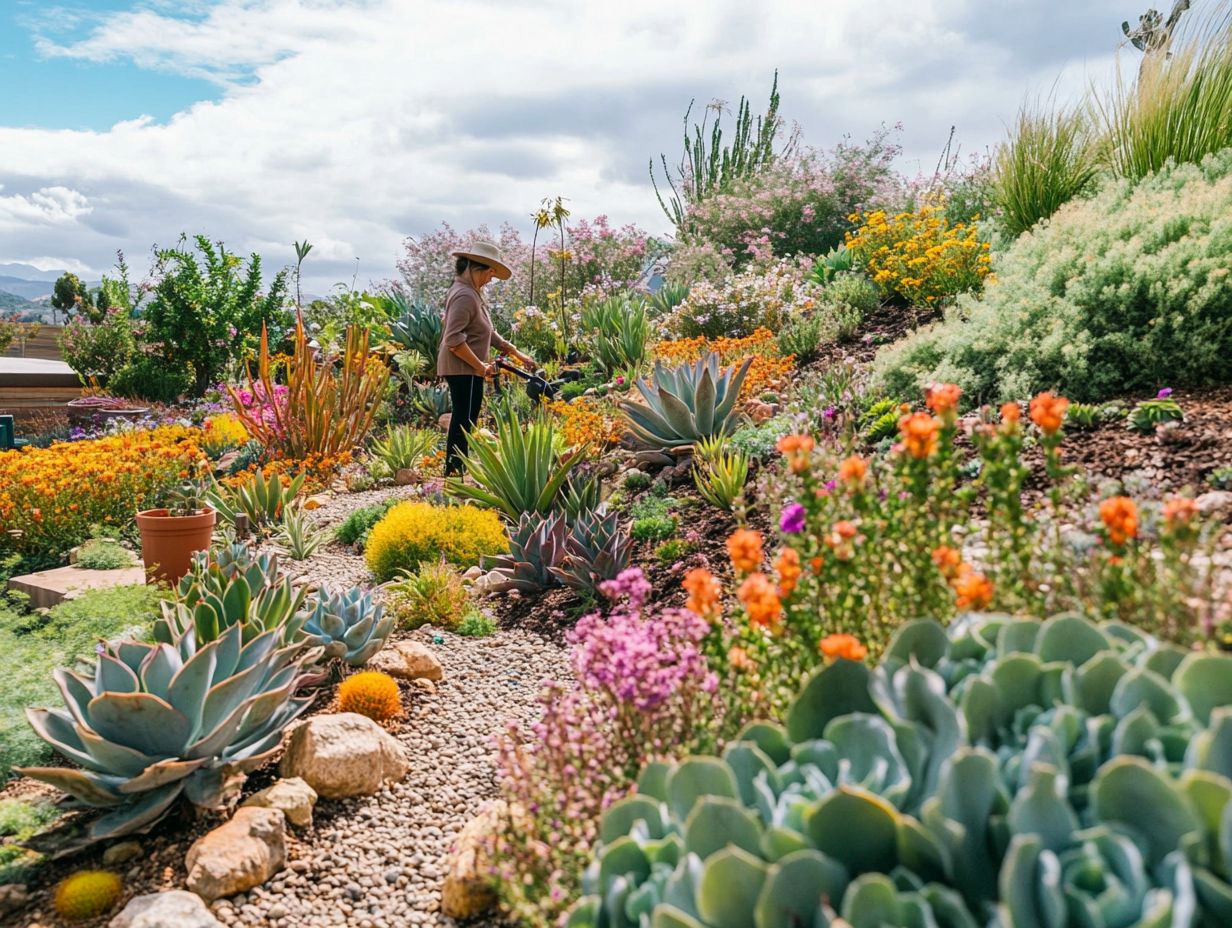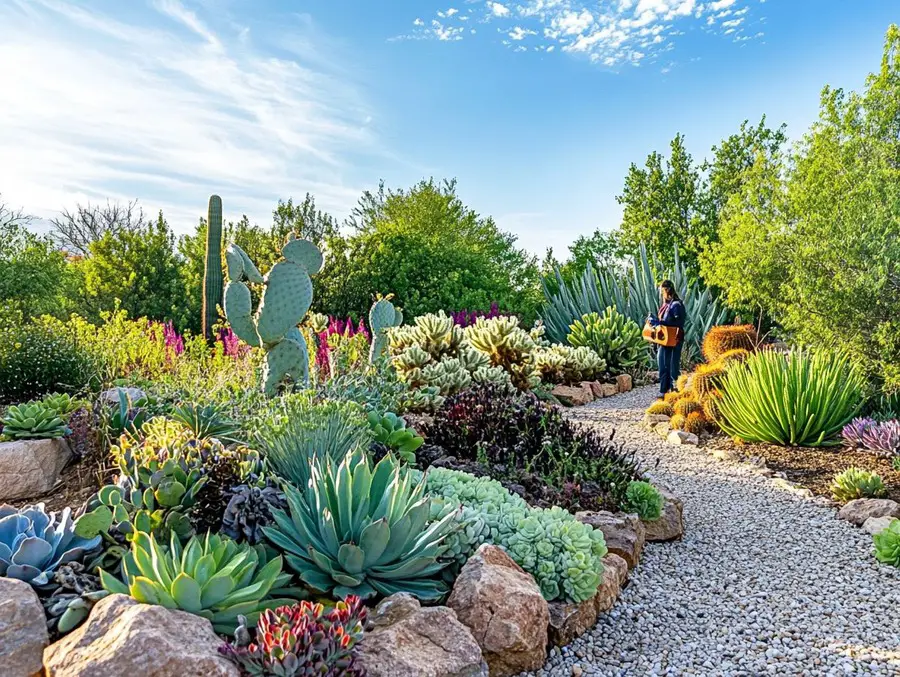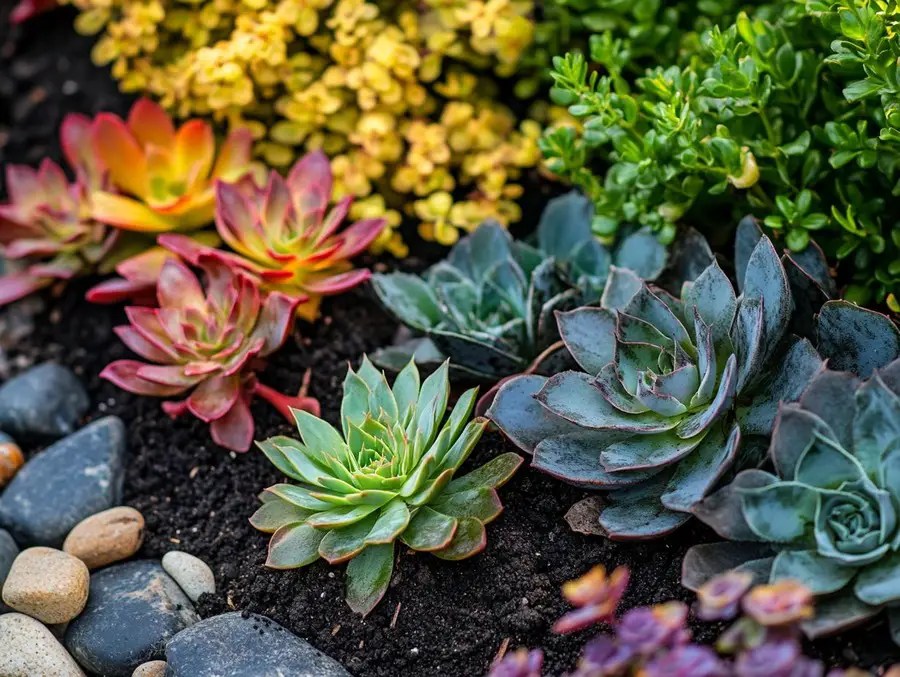We use affiliate links. If you purchase something using one of these links, we may receive compensation or commission.
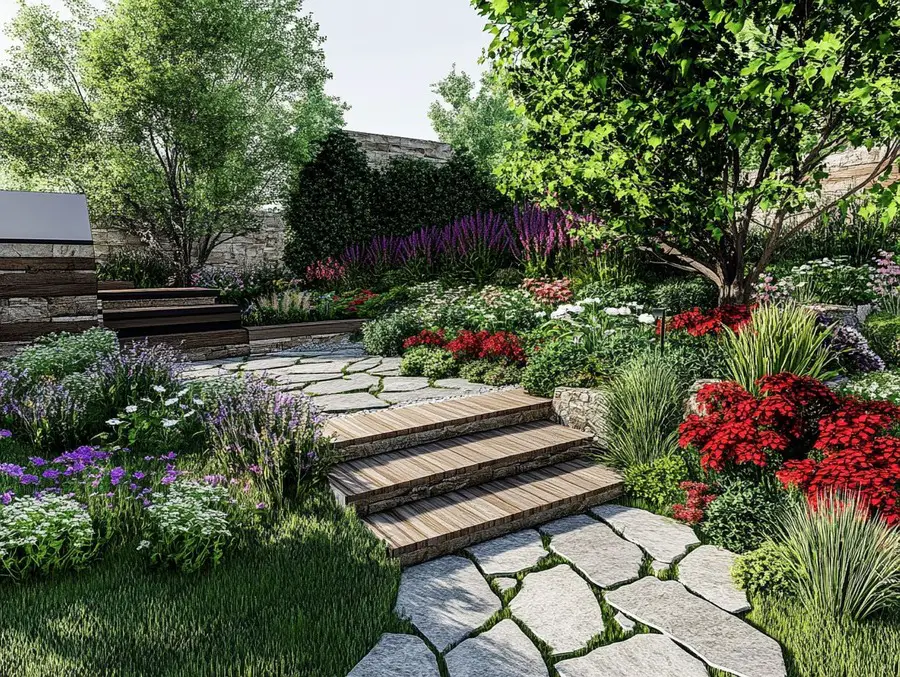
Balancing Softscape and Hardscape is the key to creating an outdoor space that’s both beautiful and functional.
Struggling with a yard that feels too empty or too cluttered?
Finding the right mix of lush greenery and structured features brings harmony and usability to your landscape.
Let’s dive into how you can create a stunning, well-balanced outdoor space!
Balancing Softscape and Hardscape
Key Takeaways
- Balancing Softscape and Hardscape means combining plants, trees, and flowers with walkways, patios, and walls to create a functional, visually appealing outdoor space.
- Softscape adds natural beauty, while hardscape provides structure and usability.
- Achieving the right mix enhances curb appeal, supports sustainability, and ensures your landscape is both inviting and practical.
Balancing Softscape and Hardscape: Transform Your Outdoor Space
Creating a beautiful and functional outdoor space is so much more than just planting flowers or laying down stone paths.
It’s all about finding that thoughtful balance between softscape and hardscape elements.
Softscape refers to the living parts of your landscape, like plants and trees, while hardscape includes the non-living features, such as patios, walkways, and walls.
This article dives into the definitions and differences between these two components, their importance in landscape design, and some practical tips to help you achieve harmony in your outdoor environment.
Whether you’re aiming to enhance your garden’s aesthetic or boost its functionality, understanding how to balance softscape and hardscape will set you on the path to creating a space that’s both inviting and sustainable.
Understanding Softscape and Hardscape
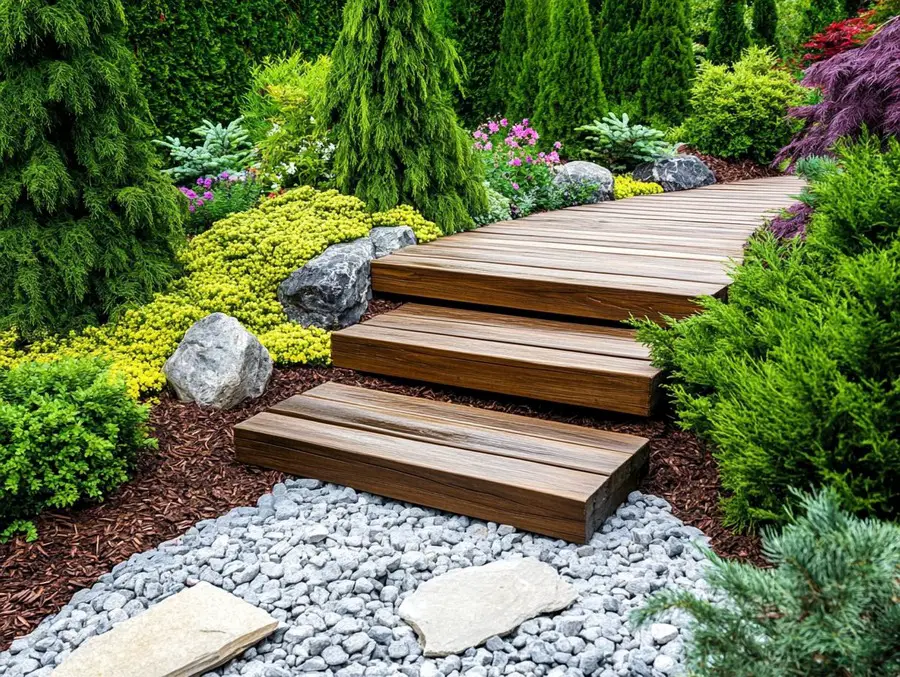
Understanding the basic concepts of softscape and hardscape is key to creating those beautifully balanced outdoor spaces you’ve been dreaming of.
Softscape includes all the living elements in your landscape, think trees, shrubs, flowers, and other plants.
On the flip side, hardscape covers the non-living aspects, like pathways, patios, decking, retaining walls, and water features.
When you combine these two elements, they really amp up the aesthetics and functionality of your garden design, helping you create a cohesive and inviting space that harmonizes beautifully with the environment.
Definitions and Differences
Softscapes and hardscapes are essential parts of landscape design, and each plays a unique role in shaping your outdoor spaces.
Softscape includes all the living elements, like plants, soil, and mulch, while hardscape focuses on the inanimate features, such as walkways, walls, and structures.
Understanding the differences between these two categories is crucial for creating beautiful and functional outdoor areas.
For example, softscape can boost the aesthetic appeal and biodiversity of your landscape with flowers, trees, shrubs, and grass.
On the other hand, hardscape materials often include stone, concrete, brick, and wood, which add structure and stability.
When you integrate softscape and hardscape elements thoughtfully, they can really complement each other.
Imagine stone pathways flanked by vibrant flower beds or decorative walls that serve as a backdrop for climbing plants.
This synergy between components creates a harmonious outdoor environment that invites you to relax and enjoy.
Importance of Balancing Softscape and Hardscape
Balancing softscape and hardscape is essential for you to create a harmonious landscape that’s both functional and easy on the eyes.
When you plan your outdoor space well, you’re combining living elements with structural features, making sure it looks fantastic but also does its job effectively.
Finding the right balance can amp up your curb appeal, promote sustainability, and boost biodiversity in your garden ecosystem.
Benefits of a Balanced Landscape
A balanced landscape brings a ton of benefits, boosting both the look and functionality of your outdoor spaces.
It creates an inviting environment that encourages biodiversity, offers spots for recreation, and keeps maintenance challenges to a minimum.
This makes it a sustainable choice for you and your community.
By carefully incorporating a mix of native plants, your landscape can naturally attract beneficial insects and wildlife, helping to create a thriving ecosystem.
This enhances the overall health of your environment and also cuts down on the need for chemical pesticides and fertilizers, which aligns perfectly with eco-friendly practices.
A well-designed outdoor space can also increase your property value while providing lovely areas for relaxation and fun activities.
These kinds of environments encourage community interaction and promote well-being, giving you a beautiful backdrop for family gatherings or peaceful retreats.
In short, the many advantages of a balanced landscape cultivate both beauty and sustainability for you and your surroundings.
Factors to Consider in Balancing Softscape and Hardscape
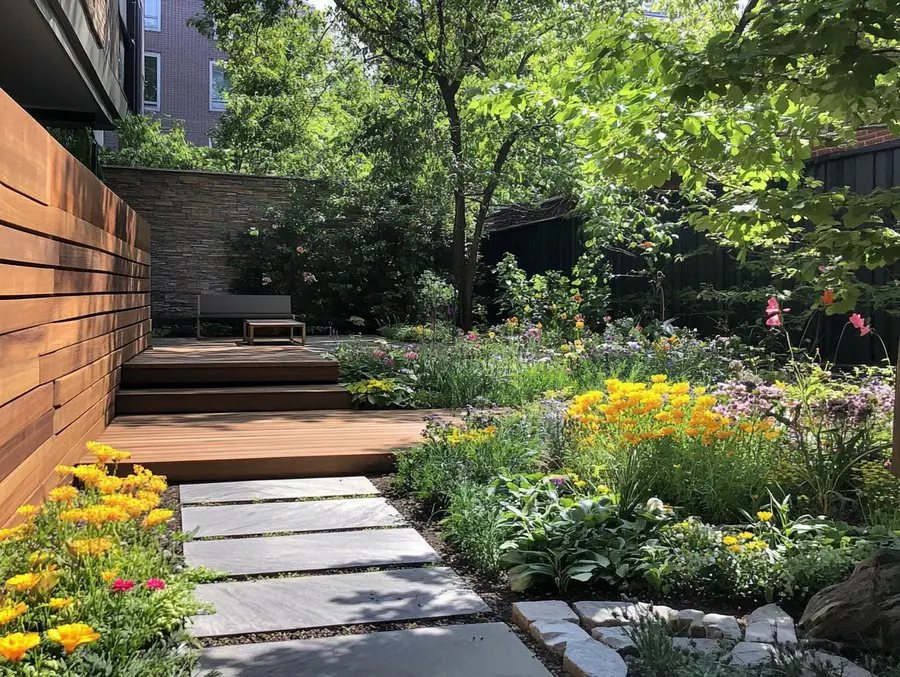
When you’re trying to find the right balance between softscape and hardscape, there are a few key factors that can really influence how your landscape design turns out.
Think about the climate in your area, your personal preferences, and the insights you gather from a solid site analysis.
All of these elements will help you pick the best materials and plant choices that will flourish in your outdoor space.
Climate and Environment
Climate and environmental conditions are super important when it comes to balancing softscape and hardscape elements in your landscape design.
Things like local climate, zoning regulations, and drainage considerations can really affect your plant choices, hardscaping methods, and how well your outdoor spaces function.
The temperatures and rainfall patterns in your area will influence which plants flourish.
For instance, you’ll want to choose drought-resistant species if you live in a dry climate, while lush vegetation might be the way to go in wetter regions.
Zoning regulations can also guide your decisions, dictating what types of structures and materials you can use, which often nudges you toward more sustainable options with a lower environmental impact.
Don’t forget about drainage patterns—they’re key!
Proper drainage is essential to keep hardscape features like patios and retaining walls from succumbing to erosion or water damage.
By keeping all these factors in mind, you can create a beautiful and sustainable landscape that fits the environment and also showcases your personal style.
Personal Preferences and Needs
When you’re thinking about the balance between softscape and hardscape in your landscape design, your personal preferences and needs are what really matter.
Factors like what you want the space to do, how you want it to look, and how you plan to use it will guide your choices, helping you create a garden that truly reflects your style and meets your requirements.
For example, if you value tranquility and a connection to nature, you might lean toward lush greenery and vibrant flowers, enhancing those softscape elements to craft a serene escape.
On the other hand, if you’re all about entertaining and durability, you might choose more hardscape features, like patios and walkways, which offer solid functionality for gatherings and activities.
By recognizing these preferences, you can create a harmonious blend that caters to your unique lifestyle, resulting in an outdoor space that looks great and also serves practical purposes, fulfilling both your aesthetic desires and functional needs.
Creating a Balanced Landscape Design
Creating a balanced landscape design requires a thoughtful approach where you blend different techniques and design principles to achieve that perfect visual harmony and functionality.
As you think about elements like color palettes, textures, and spatial arrangements, you can craft outdoor spaces that are stunning and practical for your everyday needs.
Tips and Techniques
Regarding achieving a balanced landscape design, a few tips and techniques can really make a difference for you.
By incorporating planting beds with a mix of native plants, establishing focal points, and selecting the right outdoor furniture, you can enhance both the beauty and functionality of your garden.
- Start by focusing on native plants. They support local wildlife and help your garden thrive with minimal upkeep. Try creatively arranging these plants in layers to add depth and visual interest.
- Establishing focal points, like a beautifully designed trellis or a strategically placed water feature, will draw the eye and give your space a sense of purpose.
- Regarding outdoor furniture, choose pieces that reflect your style while also being durable. Opt for materials that can withstand the elements and provide comfy spots for relaxation.
Ultimately, harmonizing these elements will create an inviting atmosphere for both your personal enjoyment and entertaining guests.
Maintaining a Balanced Landscape
Keeping a balanced landscape takes a bit of ongoing attention and regular maintenance to ensure that both the softscape and hardscape elements thrive and work well together.
You’ll want to make regular adjustments, like seasonal planting and taking care of your garden beds, to preserve the sustainability and beauty of your outdoor spaces.
It’s all about keeping things looking great and functioning well!
Regular Maintenance and Adjustments
Regular maintenance and timely adjustments are key to keeping your landscape design looking balanced and visually appealing all year round.
This means you’ll want to tackle tasks like pruning your plants, replenishing the mulch, and making seasonal changes to your planting beds to keep up with the ever-changing climate.
On top of that, it’s crucial to regularly check the condition of your soil and irrigation systems.
You want to make sure your plants are getting enough water during those dry spells while also avoiding waterlogging when the rains come pouring down.
Seasonal changes can really impact how your outdoor space looks, so it’s essential to pick the right plants that bloom or show off vibrant foliage at different times throughout the year.
By incorporating the right perennials and annuals and adjusting decorative elements like garden decor and hardscaping, you can boost both the beauty and functionality of your landscape.
Taking this proactive approach keeps your garden looking great and also supports the health and growth of your plants, leading to a cohesive and inviting outdoor space that you’ll love spending time in.
Frequently Asked Questions
What is softscape and hardscape?
Softscape refers to the living elements of a landscape, such as plants, trees, shrubs, and flowers.
Hardscape refers to the non-living elements, such as rocks, stones, pathways, and structures.
Why is it important to balance softscape and hardscape in a landscape?
Balancing softscape and hardscape is important for both aesthetic and functional reasons.
Softscape adds color, texture, and natural beauty to a landscape while hardscape provides structure and organization.
A balance between the two creates a visually appealing and functional outdoor space.
How much softscape and hardscape should I have in my landscape?
The ideal ratio of softscape to hardscape depends on the size and purpose of your landscape.
As a general rule, softscape should make up about 60% of the landscape while hardscape should make up 40%.
However, this can vary based on personal preference and the specific design goals for your outdoor space.
What are some examples of softscape elements?
Plants, flowers, trees, shrubs, grass, and other vegetation are all examples of softscape elements.
These elements can be used to add color, texture, and visual interest to a landscape.
How can I balance softscape and hardscape in a small outdoor space?
In a small outdoor space, it’s important to prioritize functionality and make the most of the available space.
Consider using hardscape elements like pathways, raised beds, or vertical gardens to add structure and organization while incorporating a few carefully chosen softscape elements for color and texture.
What are some tips for maintaining a balance between softscape and hardscape?
To maintain a balance between softscape and hardscape, it’s important to regularly maintain and update both elements.
This may include pruning and replacing plants, repairing and cleaning hardscape features, and making adjustments as needed to maintain a visually appealing and functional outdoor space.
Best Plants for Xeriscape Gardens: Hardy & Beautiful
Xeriscape Garden Styles: Easy Low-Maintenance Options
Xeriscape Gardening Techniques: Easy Low-Water Tips
Xeriscape Garden Design & Layout: Easy Water-Wise Beauty
What is xeriscaping? A beginner’s guide to drought-tolerant landscaping – Colorado State University
Related Content
Visit my Amazon Influencer Page for videos and gardening products Grow Your Own Garden

